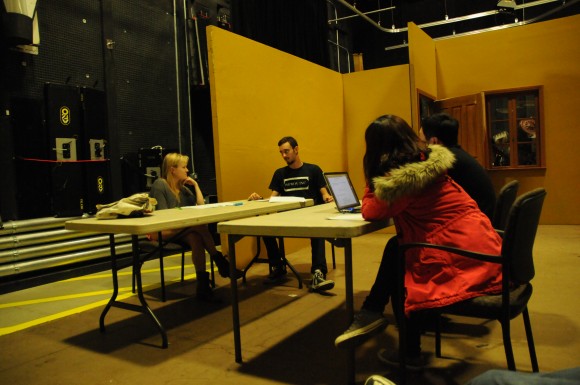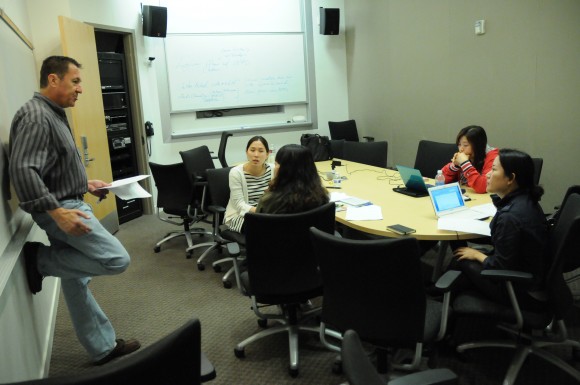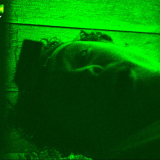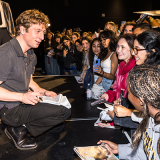
Cultural Exchange Students Produce Films That Transcend Borders
January 22, 2014
Every year in January, Dodge College hosts a group of selected students from the Dankook University in South Korea to engage in a cultural exchange with Chapman University students.
For several weeks, about a dozen students from each campus migrate across the ocean to visit their sister school in the US and Korea, respectively.
The course splits students into two groups: directing and screenwriting. Each class produces a short film, and is filmed, produced and edited solely by students.

The directing students are currently engaged in breaking down scripts, and trying to discover the motivations behind the words. Professor Jeff Stanzler encourages the group to closely read every line, probing at the ways a director could coax a performance out of an actor. The class broke into filming teams, and began rehearsing their scripts, camera movements, and stage directions on the Cinematography stage. Students here for Interterm, but not involved in the class, are the principal actors.

The screenwriting students on the other hand, are hard at work dissecting each other’s script treatments. With methodical focus, Professor Jeff Phillips takes the Korean students through each line of their script, opening the class up to discussion from other students as well. The primary focus is overcoming the challenge of creating believable, motivated conflicts between characters that the audience is interested in, a task which Prof. Phillips keeps the students returning to. It’s especially interesting to observe the non-linguistic translations — that is, the issues of plot or character which seem out of place in one culture, but not another. How does a polite observer address a murderer? What subtext can be read in the subtle action of opening a door? How do social cues like clothing affect different cultures? These are but some of the issues our students are facing, together.
Observing both sections late last week, I got a great sense of the exchange taking place between the groups. There is a certain amount of friction involved in a cross-cultural program, as the main tool we use to communicate, language, becomes more of a stumbling block than a facilitator of communication. Luckily, a pair of outgoing students acts as informal translators for each class, a process which adds quite a bit of overhead.
Not surprisingly, since they’re all visually-oriented, the students quickly come to rely on nonverbal clues to communicate quickly. It’s oddly appropriate to see these two groups of students working together so productively on a film; as the visual language of cinema is universal, these separate cultures can find substantial common ground as they set aside linguistic differences to focus on the art in front of their eyes.
Despite the challenges, the students’ films demonstrate a commitment to establishing cultural bridges, and a belief in the power of global cinema.

